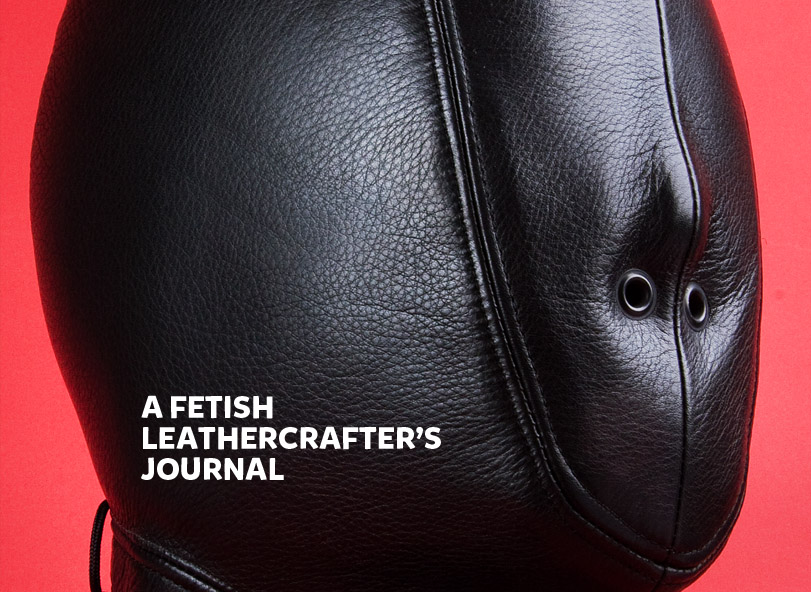I try to take high quality pictures of all my work before sending it out, as it is the only thing I have left when a project is complete. It also helps when future clients want something similar - I can pull images from the archives to show them what their projects might look like.
The first hood I made for her is an open-face style in a stretchy black patent. This should really conform nicely to her face, and accent her eyes. This is genuine leather, but with patent leather there is a coated material bonded to the surface. It almost looks like latex, and is really stretchy. I can't wait to see her in this...


 Hood number two is in a soft, thin black lamb. This makes for a sensual hood, not too heavy - so you can see your slave's features through the leather. Extremely sexy...
Hood number two is in a soft, thin black lamb. This makes for a sensual hood, not too heavy - so you can see your slave's features through the leather. Extremely sexy...  It's also for advanced players only, since it has only nose openings... An intense experience.
It's also for advanced players only, since it has only nose openings... An intense experience.  Next up is the armbinder... It was also custom made to her measurements. She is one of those talented girls who can touch elbows behind her back, so this monoglove is made to accomodate her unique talent.
Next up is the armbinder... It was also custom made to her measurements. She is one of those talented girls who can touch elbows behind her back, so this monoglove is made to accomodate her unique talent.


And last but not least, the custom sleepsack. This beauty is made of a full-grain medium-heavy leather with a soft hand and a sexy, shiny black surface. It is made to her exact measurements, and has internal sleeves and a full-length rear zipper with 3 pulls.
 I was a little nervous about this piece as it has no lacing. Usually the laces allow adjustment of the sizing, which be a good thing. Lacing also allows you to vary the tightness depending on the type of session you are doing.
I was a little nervous about this piece as it has no lacing. Usually the laces allow adjustment of the sizing, which be a good thing. Lacing also allows you to vary the tightness depending on the type of session you are doing.  Leather does have some natural stretch, and over time lacing allows you to compensate and keep the fit tight. She requested a streamlined, fitted look with a zipper only, and I wanted to give her what she wants.
Leather does have some natural stretch, and over time lacing allows you to compensate and keep the fit tight. She requested a streamlined, fitted look with a zipper only, and I wanted to give her what she wants.  I am really keeping my fingers crossed that it will fit her like a glove.
I am really keeping my fingers crossed that it will fit her like a glove.  With permission, I hope to share images of her in the gear in a future blog post.
With permission, I hope to share images of her in the gear in a future blog post.  That's it for now, folks. Thanks for visiting! I'm off to the post office...
That's it for now, folks. Thanks for visiting! I'm off to the post office...



















































